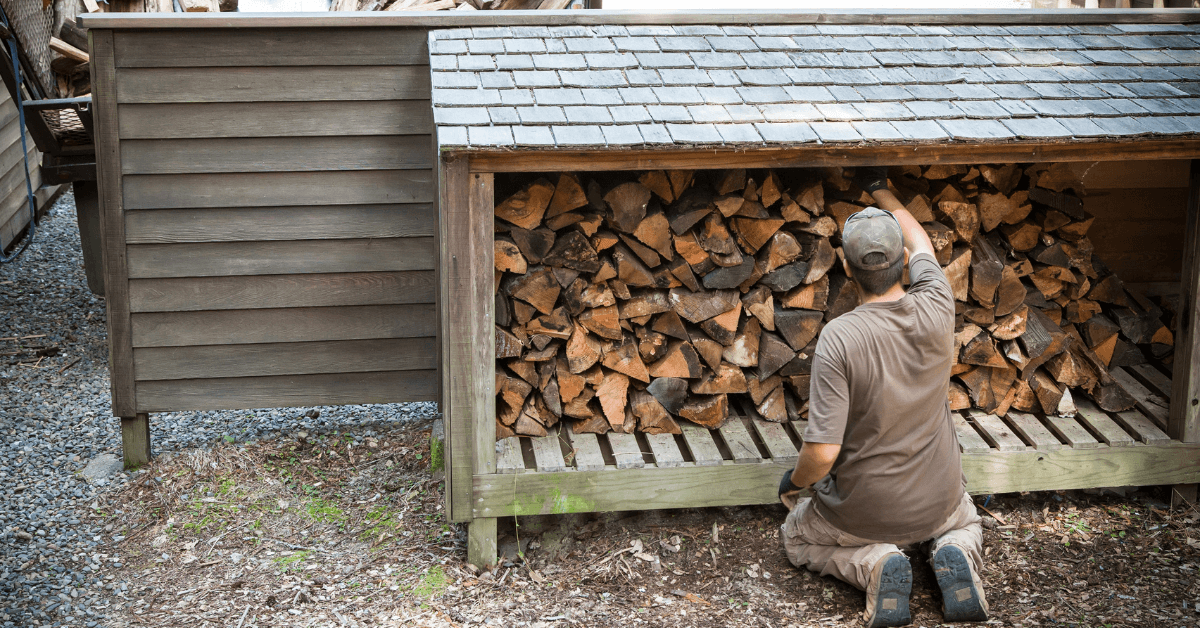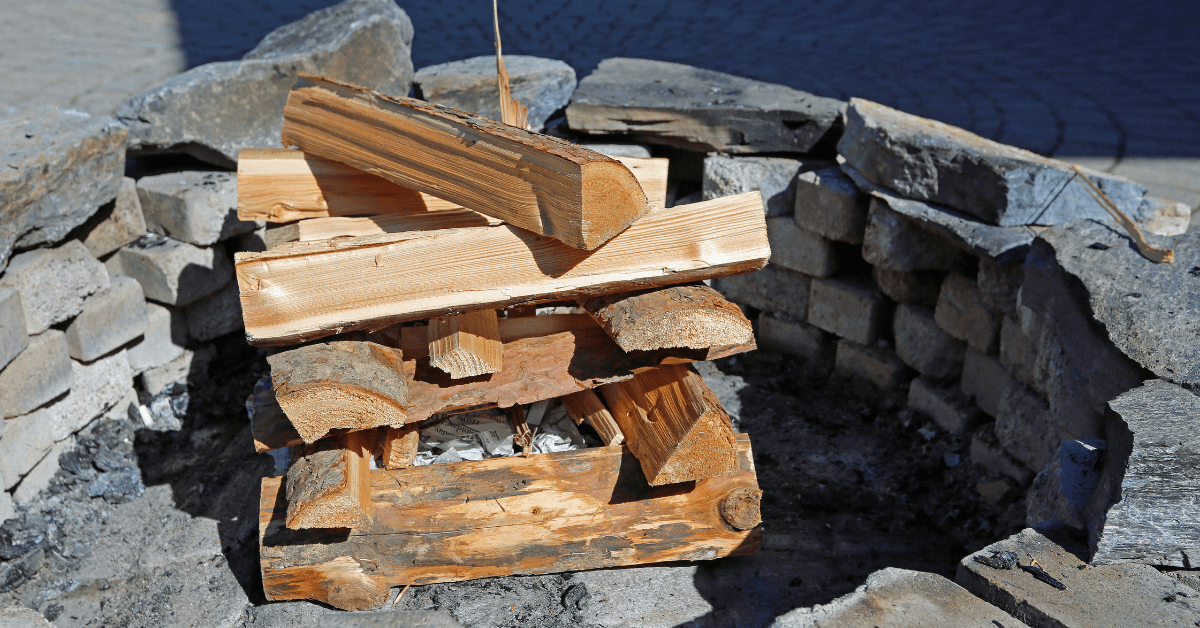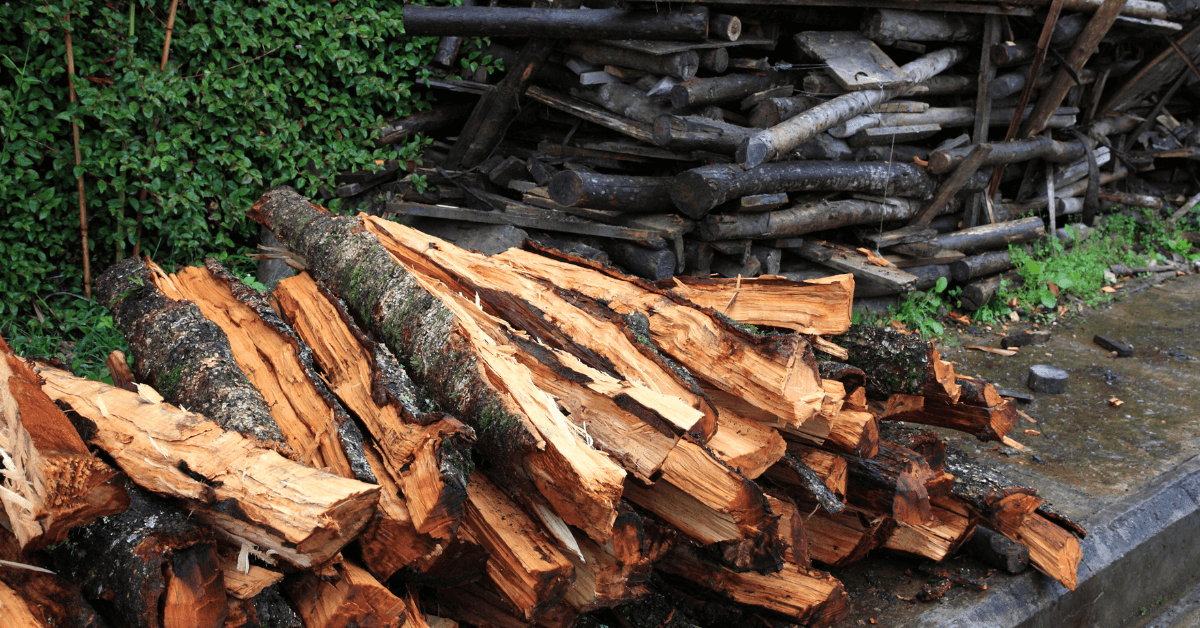The benefits of using firewood to heat your home are unmatched, but when it comes to firewood safety, it’s important that we all follow some common guidelines when storing, handling, and using firewood. While accidents are rare, answering questions such as ‘How do you safely burn wood?’ and ‘How to stack firewood in a fireplace’ helps prevent any risks. Read below to learn what precautions you can take in your home.
Keep your firewood stable
There are several ways to prevent your firewood from collapsing:
- - When arranging your firewood, make sure the stacks don’t exceed 1.10m. That is also the height of our full crates and half crates. In fact, the reason why our Giant crates have been discontinued is precisely our focus on delivery safety for domestic purposes.
- - Using a log store or rack will further improve firewood's stability while also keeping it off the ground and providing proper airflow.
Our article on How to store firewood provides more detailed tips on how to stack your firewood, keep it dry, and more. That way, instead of wondering how to dry firewood fast indoors and perform damage control, you can simply preserve its qualities with proper outdoor storage techniques.
Use firewood from the top

Always remove firewood from the top of your stack. Even if you’re tempted to try and pull out a log from the middle or bottom, it’s not worth the risk, as this may cause the entire stack to fall over.
Be careful when igniting your firewood
It’s best to avoid accelerants that are too potent, such as gasoline or charcoal lighter fluid. They may be difficult to control, create harmful gases, or produce large fireballs. Our recommendation on how to use firewood lighters is to stick to kindling, firelighters, and fire gels that are safer to work with and more eco-friendly.
Create a clearance
Fireplaces should be fitted with a protective screen or guard to keep embers and sparks from flying out. Nevertheless, it’s important to provide sufficient clearance between heat sources and any combustible materials. Manufacturers often provide guidance on finding the best position. Most officials recommend providing a distance of at least 1 metre between the opening of the firebox and any furniture, rugs, drapes, etc. Of course, the more the better, with some sources proposing a clearance of 3 metres. The same numbers apply for the front of wood stoves, while for the rear and sides, the recommended distance to the surrounding walls is 15cm. In addition to that, they should be placed on a noncombustible, fire-resistant base.
Stacking the fireplace

Fires should always be handled in a manageable and safe way, and that includes the process of stacking your firewood. There are several ways to build your fire:
- - Conventional, where the fire is started at the base of the fireplace: Start by placing your preferred firestarter (e.g. firelighters or newspaper) at the bottom. Stacking your kindling in a crisscross formation, so they touch, but still allow air to flow through. Place your logs so that they lean on each other without being too close or too far away. Smaller logs work better in this type of fire, with 2-3 logs being a good number to start with.
- - Top-down or reverse, where the fire is started at the top: Place your larger-sized logs horizontally, in a row at the bottom, tightly packed together. Place a second row on top, choosing slightly smaller logs. Stack them perpendicularly to the first layer. Place the kindling on top of these logs in a crisscross pattern. Your firestarter then goes to the very top.
Avoid overfiring your wood stove, or placing more wood than recommended. A fire that is burning bigger, hotter, and faster than what the stove is designed for may cause permanent damage to the stove’s structure.
Use gloves
Make sure you wear gloves to protect your hands. Wood splinters are not only uncomfortable but may cause infections when not removed. If you’re only moving a single log to add to your fire, you may not need gloves, but don’t forget to use them whenever you’re handling larger quantities.
Beware of hot ash
Although it may appear that your fire has burned down and your fireplace or wood burner is cold, always be cautious when handling ashes as they can stay hot for as long as 48 hours. When you clean the ash from previous fires, use an ash shovel to collect it and place it into a closed metal container outside the house.
Put out the fire
An important aspect of firewood safety is to never leave a fire unattended. Put it out when going to bed or leaving the house. To safely extinguish the fire, you need to remove one of the three elements shown in the Combustion Triangle: Oxygen, heat, or fuel. Therefore, you can:
- - Stop adding firewood
- - Spread out the wood and embers using a fireplace poker
- - Cover the wood and embers with cool ash from the bottom (repeat several times as needed)
- - Cover everything with a thin layer of baking soda. Avoid using water unless it’s an emergency, as it may cause excessive smoke, steam burns, or damage to the masonry. If you must resort to using water, place it in a spray bottle as opposed to a cup or bucket.
Note that homeowners who use a water jacket fireplace stove have to put out the fire in case of a power outage.
Don’t burn wet wood

Will wet wood burn? Yes, however, you should avoid using it under all circumstances. Logs that contain excessive moisture are difficult to ignite and produce less heat, but more importantly, what happens when you burn wet wood or green wood is lots of smoke is released and hazardous soot builds up in your chimney. Kiln-dried logs, on the other hand, are more efficient in terms of heat output and burn for longer, with little smoke. There are national standards such as the Ready to Burn certification scheme indicating exactly how dry should firewood be to be considered suitable. And apart from the safety concerns, is it illegal to burn wet wood? According to the government’s environmental plan for cleaner air, households can face a fine if their chimneys emit too much smoke or if they are found to be using unauthorised fuels.
Take further fire safety measures
Here are some additional tips that you can follow to ensure a safe environment:
- - Have your chimney inspected and cleaned annually by a professional.
- - Install smoke and carbon monoxide detectors and change the batteries regularly.
- - Keep a fire extinguisher close on hand and make sure all members of the household know how to use it.
- - Never leave children or pets unsupervised around a fire. Keep any fireplace tools, lighters, or matches out of their reach.
There is nothing like the warmth of a fire on a cold winter day - we hope these firewood safety tips will help you enjoy it to the fullest while resting assured that your home and family are completely safe.
Firewood is very eco-friendly and efficient, however, some people choose to combine it or replace it with wood pellets for various reasons. For homeowners with such preferences, Luxury Woods provides high-quality certified pellets only.


